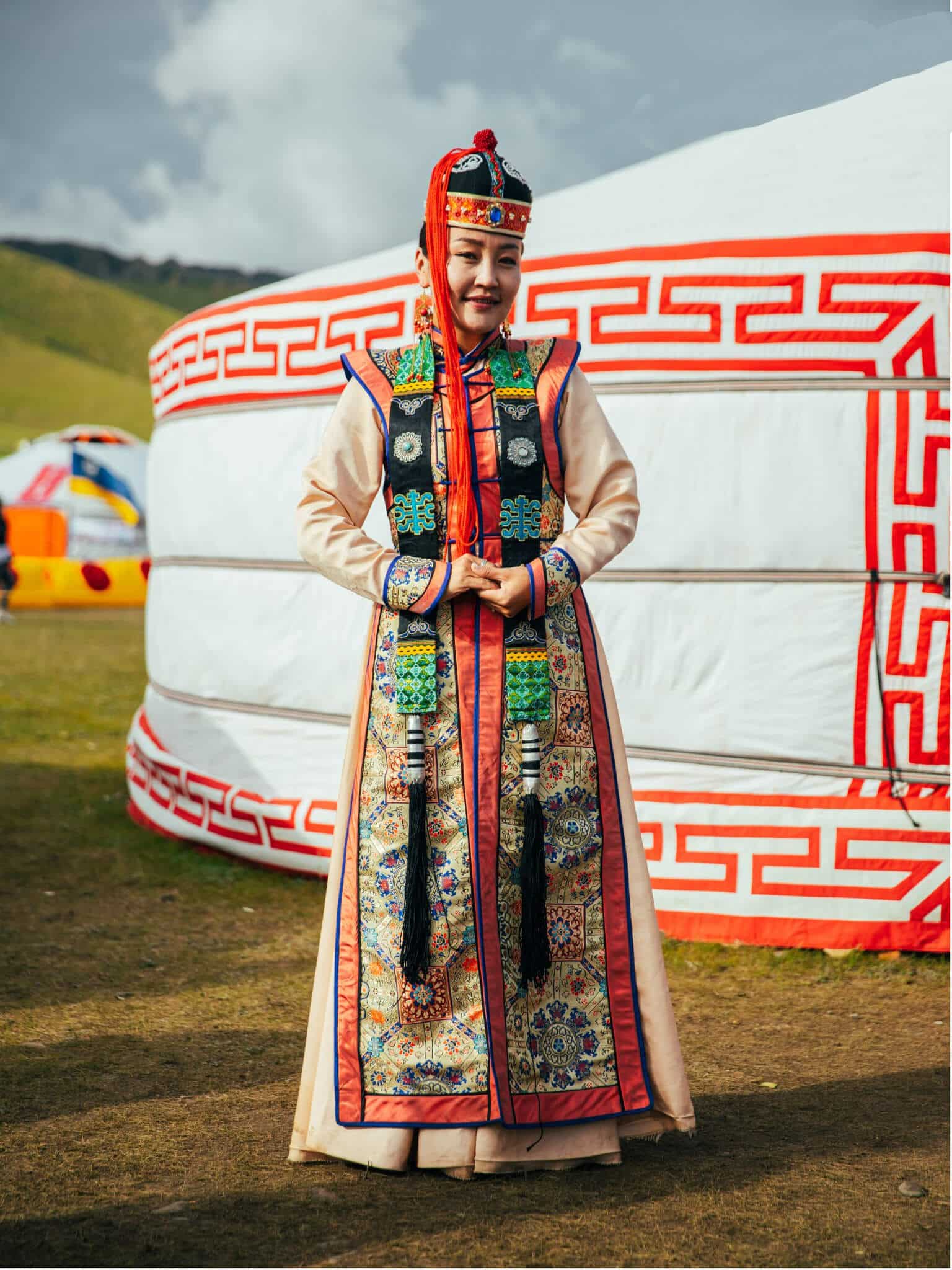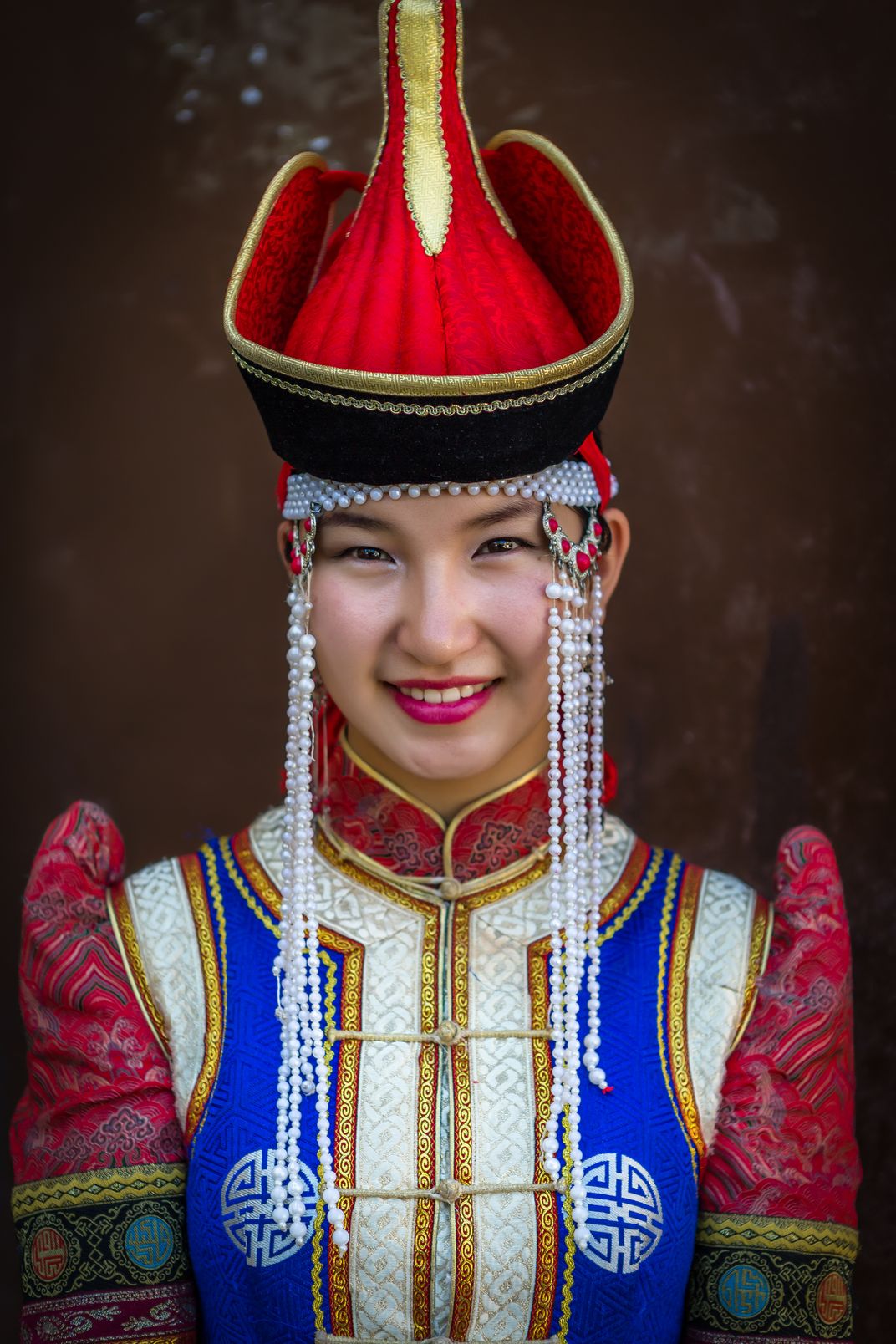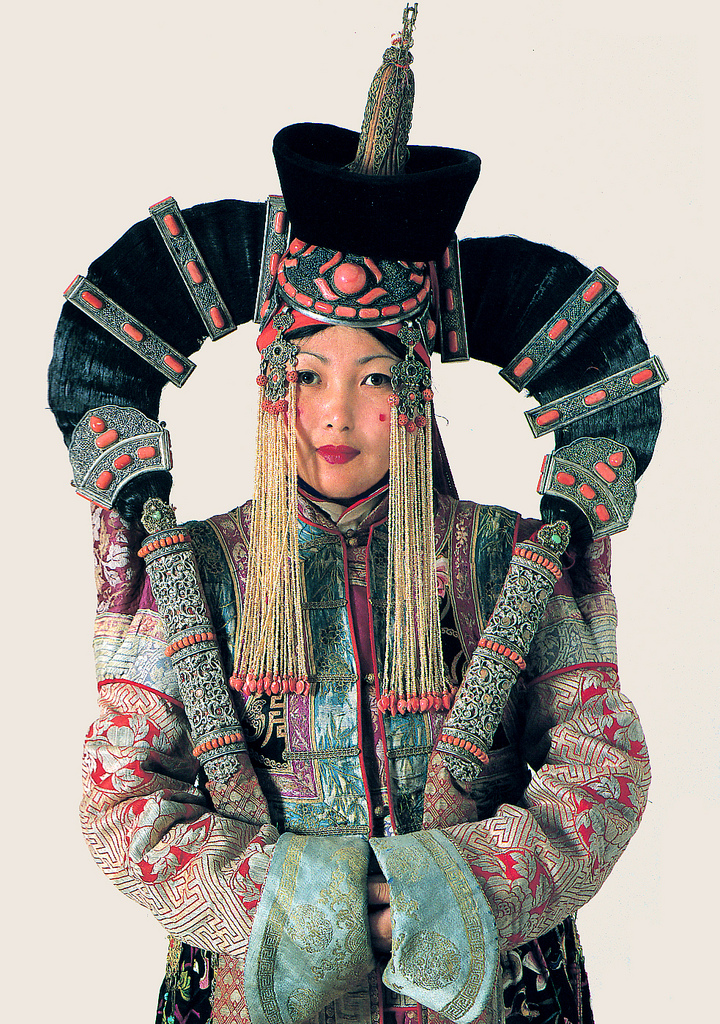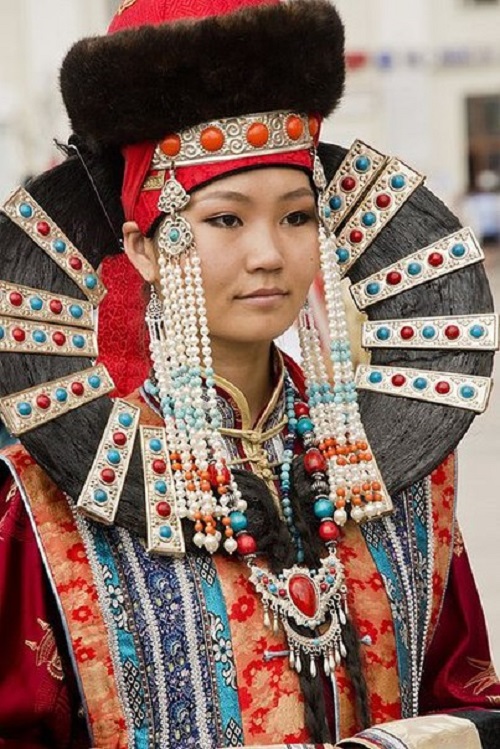
Mongolian Traditional Dress Cultures and Clothes Traditional dresses, Traditional outfits
DEEL. Deel is the traditional Mongolian clothing and worn for centuries. It is made of various materials such as cotton, silk, cashmere, wool, suede, and brocade, etc. Deel looks like thick, knee-length togas - burgundy, olive, khaki, violet, and marine blue are the most popular colors, with a silk sash cinched around the waist - usually.

mongolian junior fashion Google Search Folk clothing, Traditional outfits, Historical clothing
The oblong-shaped kerchief, tied round the neck is another traditional item. Although not worn by all women, a popular type is the 'taor', which is a short sleeved shirt, sometimes embroidered, which is worn by both men and women. During the 1950's the UN began giving assistance to the Mongols.

Mongolian traditional clothes (2023) CorrectMongolia
What is the deel? The deel is a Mongolian traditional dress/robe that men and women both wear during ceremonies and on special occasions, however, most nomads also wear it day to day out in the countryside. You will need a khadag/linen belt, traditional Mongolian shoes, a cowboy hat, and some small jewelry or ornaments to complete the look.

Local style Traditional headdresses of the Mongolian women
Mongolian traditional clothing, or Mongolian traditional clothes, is a captivating fusion of practicality, symbolism, and artistry, reflecting the nation's rich cultural heritage.

Mongolian Deel Attire Smithsonian Photo Contest Smithsonian Magazine
Mongolian clothes include hat, deel, uuj, coat, vest, underclothes and boots. The main material of the deel clothes is silk. There is similarity of style and meaning while the clothes are showing their own ethnicities. However different men's clothes, they are pretty same to each other in any territories.

Pin on
THE MONGOLIAN TRADITIONAL COSTUME CONSISTS OF HAT, DEEL, BOOTS AND ACCESSORIES. Hats One of the most colorful and original items of Mongolian national dress is the traditional headwear.

Local style Traditional headdresses of the Mongolian women
The Mongolian traditional costume consists of a deel, a hat, boots, and accessories. There are differences between the costumes of the various ethnic groups, but all the deels have the same shape: long sleeves, a wide flap that gets folded up on the chest, buttons on the right shoulder, a high collar, and a fabric belt around the waist.

Deeltei Mongol Naadam Mongolian National Costume Festival
Typical items included felt hats, long jackets with loose sleeves, and practical baggy trousers. As the Mongol army was based on fast-moving, lightly armed cavalry, recruiters usually had a relaxed 'come-as-you-are' approach to uniforms so that clothes in both war and peace were often very similar.

Mongol Woman in Traditional Outfit. Xiangshawan. Inner Mongolia, China Pentax User Photo Gallery
Even in the pastoral areas, people wear traditional clothes and modern clothes alternately. Only during festivals, weddings, or at the Nadam Fair do people wear colorful traditional clothes. The colorful Mongolian traditional costumes reflect the wisdom and aesthetic taste of the people, and symbolize their frankness and open-mindedness, which has become a typical symbol of the Mongolian culture.

Ethnic Mongolian jewellery Kaleidoscope effect
CLOTHING SKIN CARE ARCHERY SOUVENIR Our most popular products Camping Yurt/GER/ Rated 4.25 out of 5 $ 2,250.00 - $ 4,550.00 Mongolian Warrior Sculpture Rated 4.83 out of 5 $ 140.00 Beginner Light Brown Morin Khuur with Grip Rated 4.86 out of 5 $ 470.00 Sheep Wool Sleeping Bag Rated 5.00 out of 5 $ 240.00 - $ 310.00 Boots With White Embroidery

MONGOLIAN GIRL Mongolian girl, Nomad clothing, Traditional fashion
Traditional clothing is the representation and evaluability of the unique culture and traditions of ethnic groups. Clothing varies depending on the status, age and gender in each culture. Mongolian hat In Mongolia, a hat is the most important piece of clothing, representing the status of the wearer.

Mongolian traditional clothes Traditional outfits, Costumes around the world, Traditional dresses
The deel, or kaftan, is the Mongolian traditional garment worn on workdays and special days. It is a long, loose gown cut in one piece with the sleeves; it has a high collar and widely overlaps at the front. The deel is girdled with a sash. Mongolian deels always close on the wearer's right and traditionally have five fastenings.

Pin on Mongolian clothing
The first form of Mongolian deel can be found during the Hun era, a long tunic made with leather or animal skin. Around that time, in the 6th to 13th century, the Turkic had a similar gown as deel which was worn in the opposite direction. That's why some countries in central Asia have traditional clothing similar to deel.

Traditional Mongolian costumes Traditional outfits, National clothes, East fashion
Traditional Mongolian Clothing. Gear up for a journey to Mongolia with a twist - dive into the world of Mongolian traditional clothes! Picture this: relieving the vibes of Mongolian nomads that have rocked the steppes for ages. Oh, and did I mention the extreme weather hacks woven right into the deel's design? Get to know more below!

turn of the century color photos mongolia Google Search Costumes around the world, Mongolia
The Deel: A Nomadic Staple At the heart of Mongolian festive attire lies the iconic "Deel", a traditional robe worn with grace by both men, women and even kids. Beyond its loose, flowing design that provides comfort in the ever-changing Mongolian climate, the Deel symbolizes the nomadic spirit of adaptability and freedom.

plus style Этнические наряды, Монголия, Мировые культуры
Their traditional clothes are called a deel. It's pronounced "dell" like the-farmer-in-the, but it doesn't mean a clearing. The deel is a really practical bit of clothing. It's almost like a tunic - there are arm holes and it buttons up cozily. It's worn by both genders and comes in many different colors.